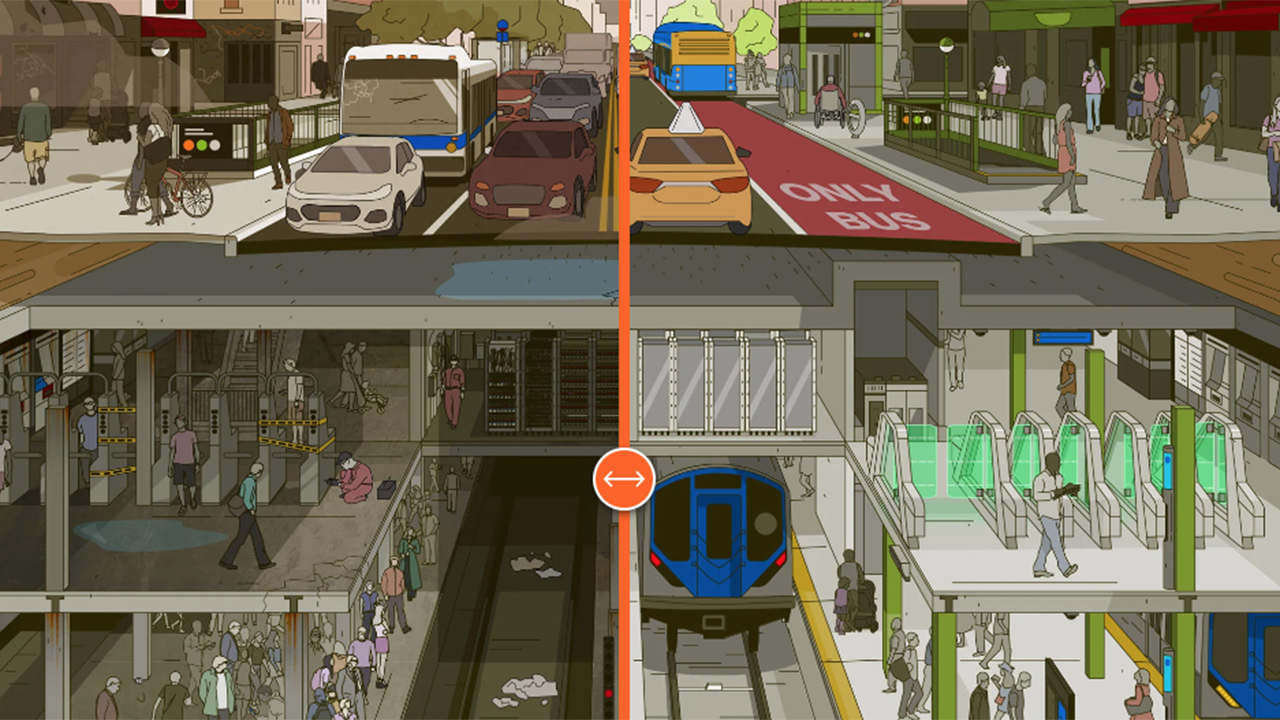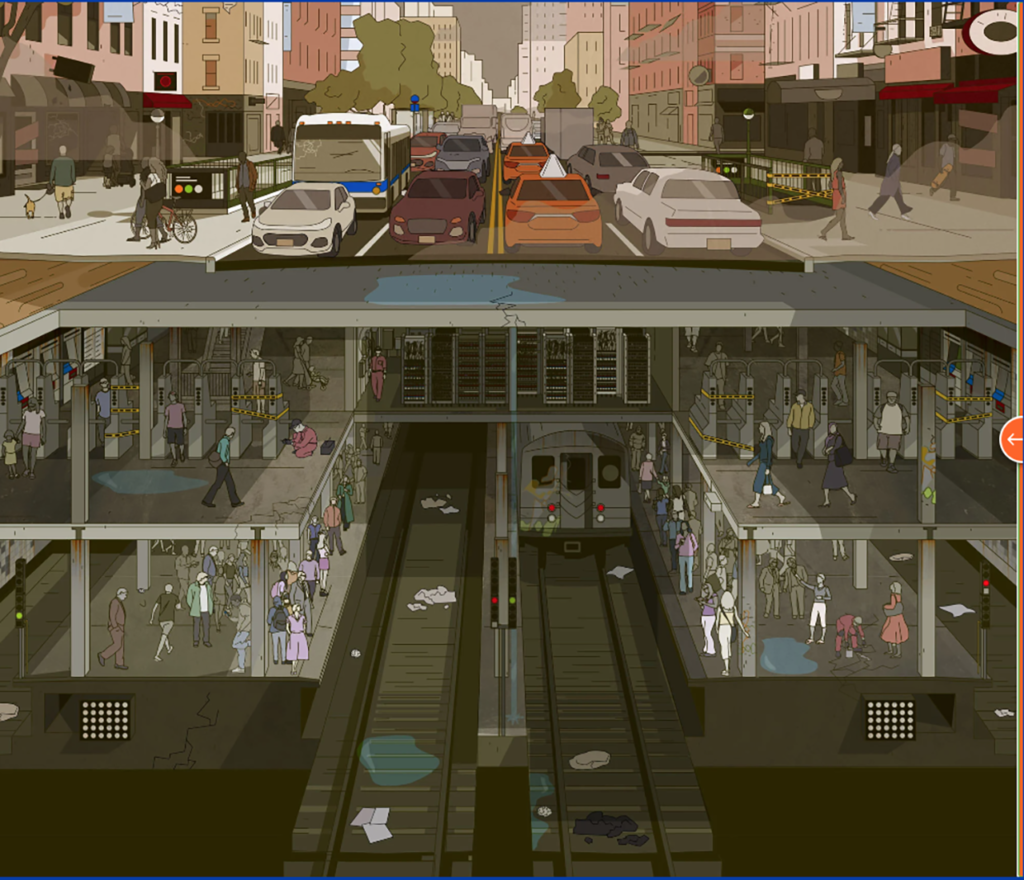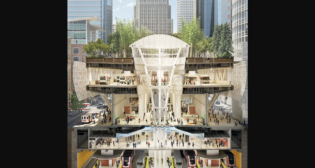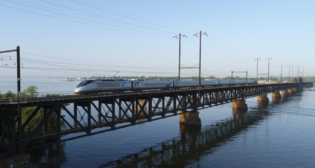
NYMTA’s ‘The Future Rides With Us’ Not ‘An Arbitrary Budget Target’
Written by William C. Vantuono, Editor-in-Chief
The New York Metropolitan Transportation Authority’s “The Future Rides With Us” 20-Year Needs Assessment study is riding on the number 15 followed by 11 zeros: $1.5 trillion, the figure the agency assigns to the value of its transportation assets—subways, regional/commuter trains, buses, bridges and tunnels. It’s described as a “long-term vision to rebuild, improve and expand the region’s transit system over the next 20 years” that “takes an exhaustive look into the system’s infrastructure needs. It reveals challenges and opportunities for the future of the transportation in the region and lays out an approach to rebuilding the MTA system for another century of service.”
“The document differs from previous assessments by providing a comprehensive, unconstrained view of the system’s needs, rather than constraining it to meet an arbitrary budget target,” the MTA said. ”As a result, it will serve as a strong foundation in determining how to prioritize capital spending in developing the 2025-2029 Capital Plan. The assessment also debuts a comparative evaluation of potential expansion projects that could be pursued if the system’s rebuilding and improvement needs are met, for the first time analyzing potential projects objectively along a host of criteria to compare their respective benefits and costs.”

“The MTA has never undertaken a 20-Year Needs Assessment fed by this level of comprehensive data and analysis,” said MTA Chair and CEO Janno Lieber. “Instead of matching needs to some pre-approved budget, this detailed evaluation tells the whole story, laying bare the urgent need for renewal and improvement of the system’s existing infrastructure and to prepare for climate change. This is an essential first step to start the discussion that will shape the 2025-2029 MTA Capital Plan.”
“The level of detail, put together over the course of two years, is unprecedented at this scale, resulting in the most rigorous and transparent 20-Year Needs Assessment in MTA history,” the agency said, adding that it examined all of its close-to six million “component assets,” the majority of which are rail:
- 8,747 railcars.
- 5,840 buses.
- 1,907 miles of track.
- 1,092 rail bridges.
- 704 passenger stations.
- 429 power substations.
- 101 maintenance shops.
- 68 rail yards.
- 7 vehicular bridges.
- 2 vehicular tunnels.
MTA said its future “is contingent on three main factors that drive the need for investment: aging infrastructure, climate change and evolving rider needs. Prolonging the life of existing assets will not only improve reliability and allow for increased service systemwide but enable the opportunity to expand and modernize the transit network. Over the next 20 years, we will be forced to confront three major challenges:
- “Aging infrastructure: A vast and aging transit network largely built more than a century ago could experience catastrophic breakdowns without intervention.
- “Climate change, which is imperiling infrastructure that was not designed to withstand extreme weather events.
- “Changing rider needs:A profound societal transformation around travel, work, and what riders expect from a transit experience is underway. Our region is projected to grow by more than one million residents and nearly one million jobs by 2045. We must be ready—or risk stifling a new generation of growth.“
The picture of a future without the level of investment the MTA said it requires is very dystopian: “Without more aggressive intervention, the deteriorating structural beams holding up the 110-year-old train shed at Grand Central Terminal—which supports Park Avenue and provides a roof for trains—is at risk of failure, suspending Metro-North service into Manhattan. In 20 years, more than 75% of the New York City subway major power substation components will be more than half a century old, risking extended power outages across the system and potentially shutting down multiple lines. As climate change accelerates and extreme weather events become more common, we risk asset failures and system shutdowns without targeted climate resilience protections.”
This dystopian picture is illustrated in “A Look at Two Possible Tomorrows,” a simple but stark viewer-changeable slide show:


A PARTIAL WISH LIST
New York City Transit
- Replacement of aging substations and installing Communications Based Train Control (CBTC) for 90% of trips by 2045 will greatly enhance reliability, shorten waiting times, and reduce delays.
- Functionally obsolete shops and yards, like the Livonia Yard, need to be reconstructed. The Livonia Maintenance Facility was built 101 years ago and is not capable of servicing new railcars because they do not fit. This structural limitation prevents running new cars on the 3 Line.
- Continued investments in ADA accessibility projects ensures that by 2045, 90% of all subway rides take place at fully ADA accessible stations.
- Increase sustainability by converting the largest bus fleet in the country to a zero-emissions fleet by 2040, along with updating the necessary facilities and depot to support the transition. The MTA has also committed to reducing 85% of greenhouse gas emissions from its day-to-day operations.
Metro-North Railroad
- Major capital investments are required to reconstruct the Grand Central Train Shed, Park Avenue Tunnel and Park Avenue Viaduct, vital to 98% of Metro-North service.
- To protect the Hudson Line from growing climate threats, additional resiliency measures are needed to mitigate and prevent flooding from sea-level rise and heavy rain.
- Platforms at 19 stations on the Harlem Line currently require additional structural support and maintenance due to deteriorating conditions and must be replaced.
Long Island Rail Road
- Due to its aging condition, the Atlantic Avenue Tunnel must be structurally rehabilitated and improved with waterproofing, enhanced lighting, upgraded fire safety and security systems.
- To minimize disruptions to service, 60 to 100 bridges and 11-23 viaducts must be replaced or rehabilitated. Taking the opportunity to apply state-of-the-art protective surface coating and deck waterproofing will decrease future maintenance needs.
Approximately 50 miles of signal systems need to be upgraded, particularly segments across five LIRR branches where 50%-75% of the signal components are rated poor/marginal. - Completion of the Centralized Train Control location will improve operations and communication. The centralized system also replaces train tower control systems located at different points across the LIRR’s service area, reducing operating costs and future capital costs by eliminating the need to maintain towers and their related communication systems.
Bridges & Tunnels
- A sustained high level of capital investment similar to current levels is necessary to maintain the facilities in good condition while also improving them to better serve the region and prolong the life of critical structure elements through innovative technologies like cable dehumidification. Cable dehumidification is a proven technique used around the world to minimize corrosion and preserve main cables, which are the primary load-carrying elements for suspension bridges.
“For the first time, the document includes an evaluation of potential future projects to expand the system comparatively against to one another on a level playing field,” MTA noted. “The analysis comprehensively considers all projects through a systematic analysis using conservative industry-leading cost estimation and modeling techniques that take into account current and projected changes to costs, ridership and local population shifts. Projects are compared to one another to evaluate potential ridership, cost, travel time, capacity, geographic distribution, equity, resiliency and network leverage.”
Editor’s Comment: Everything in this report is absolutely necessary. The $1.5 trillion question: Where is the money going to come from?



